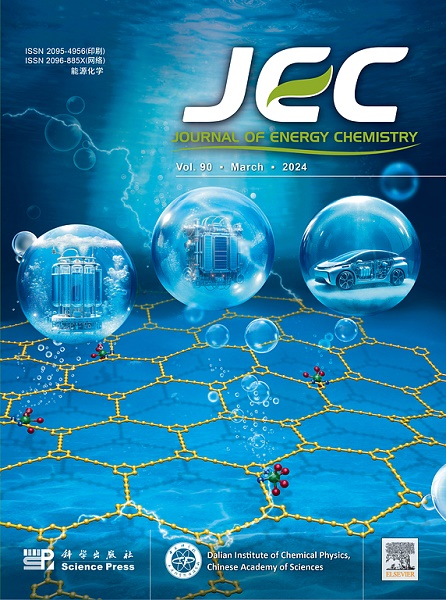Scalable carbon-patterned layer enhances low-temperature performance of large-format lithium-ion batteries
IF 13.1
1区 化学
Q1 Energy
引用次数: 0
Abstract
With electric vehicles (EVs) emerging as a primary mode of transportation, ensuring their reliable operation in harsh environments is crucial. However, lithium-ion batteries (LIBs) suffer from severe polarization at low temperatures, limiting their operation in cold climates. In addition, difficulties in discovering new battery materials have highlighted a growing demand for innovative electrode designs that achieve high performance, even at low temperatures. To address this issue, we prepared a thin, resistive, and patterned carbon interlayer on the anode current collector. This carbon-patterned layer (CPL) serves as a self-heating layer to efficiently elevate the entire cell temperature, thus improving the rate capability and cyclability at low temperatures while maintaining the performance at room temperature. Furthermore, we validated the versatile applicability of CPLs to large-format LIB cells through experimental studies and electrochemo-thermal multiphysics modeling and simulations, with the results confirming 11% capacity enhancement in 21,700 cylindrical cells at a 0.5C-rate and −24℃. We expect this electrode design to offer reliable power delivery in harsh climates, thereby potentially expanding the applications of LIBs.

可扩展的碳图案层增强了大规格锂离子电池的低温性能
本文章由计算机程序翻译,如有差异,请以英文原文为准。
求助全文
约1分钟内获得全文
求助全文
来源期刊

Journal of Energy Chemistry
CHEMISTRY, APPLIED-CHEMISTRY, PHYSICAL
CiteScore
19.10
自引率
8.40%
发文量
3631
审稿时长
15 days
期刊介绍:
The Journal of Energy Chemistry, the official publication of Science Press and the Dalian Institute of Chemical Physics, Chinese Academy of Sciences, serves as a platform for reporting creative research and innovative applications in energy chemistry. It mainly reports on creative researches and innovative applications of chemical conversions of fossil energy, carbon dioxide, electrochemical energy and hydrogen energy, as well as the conversions of biomass and solar energy related with chemical issues to promote academic exchanges in the field of energy chemistry and to accelerate the exploration, research and development of energy science and technologies.
This journal focuses on original research papers covering various topics within energy chemistry worldwide, including:
Optimized utilization of fossil energy
Hydrogen energy
Conversion and storage of electrochemical energy
Capture, storage, and chemical conversion of carbon dioxide
Materials and nanotechnologies for energy conversion and storage
Chemistry in biomass conversion
Chemistry in the utilization of solar energy
 求助内容:
求助内容: 应助结果提醒方式:
应助结果提醒方式:


